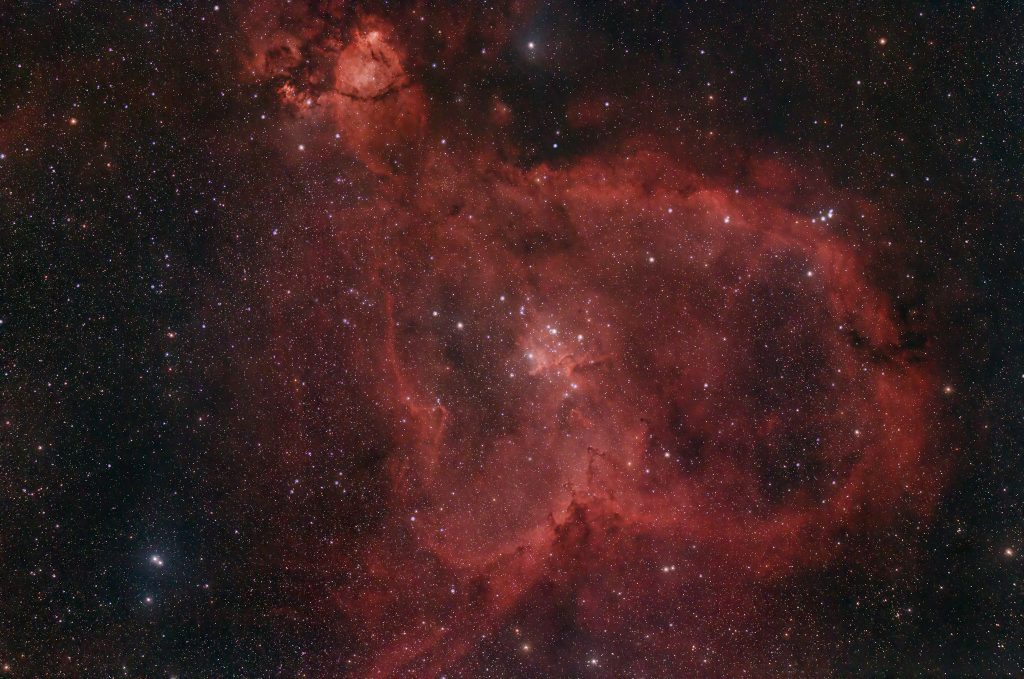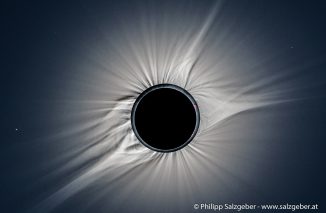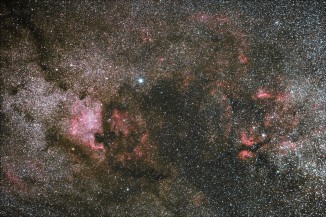
IC 1805 is a cloud of glowing hydrogen in the constellation Perseus. The gas is ionized by the hot young stars of the cluster Melotte 15 at the nebula’s center.
Read More
IC 1805 is a cloud of glowing hydrogen in the constellation Perseus. The gas is ionized by the hot young stars of the cluster Melotte 15 at the nebula’s center.
Read More

Yesterday afternoon I decided to do some simple astrophotography high up in the mountains. I chose the Cavalljoch as the view to the south is unobstructed. My backpack was way too heavy, but somehow I managed to trek from Schattenlagant to the Cavalljoch. The night was the darkest night I ever experienced. M13 was clearly visible with indirect vision with the unaided eye. Read More
M13 and M3 are two very fine globular clusters visible in the spring sky:
After a long spell of clouds of rain, on sunday evening I took advantage of a few clear hours to get some more data on M51. This image is a combination of raw images from April 20th and May 10th. The total exposure time is now at 64 minutes.
In preparation for an upcoming trip I am doing some equipment tests to prepare for the opportunity to observe from a dark sky.
It turns out even with the very rough polar alignment that is possible with the built-in peephole of the Polaire tracking mount 30 second exposures are possible with 180mm focal length on an APS-C camera:
3 x 30s – f/4 – ISO 1600, no darks, no flats, stacked with DeepSky Stacker, Nikon AF Nikkor 180mm f/2.8, Nikon D7000
This is the ful frame:
detail of the image above: Read More
Winter is not normally a good time for galaxies because the Milky Way is porminent in the sky, but while waiting for comet Lovejoy to rise, I used the time to spend a little exposure time on some bright galaxies.